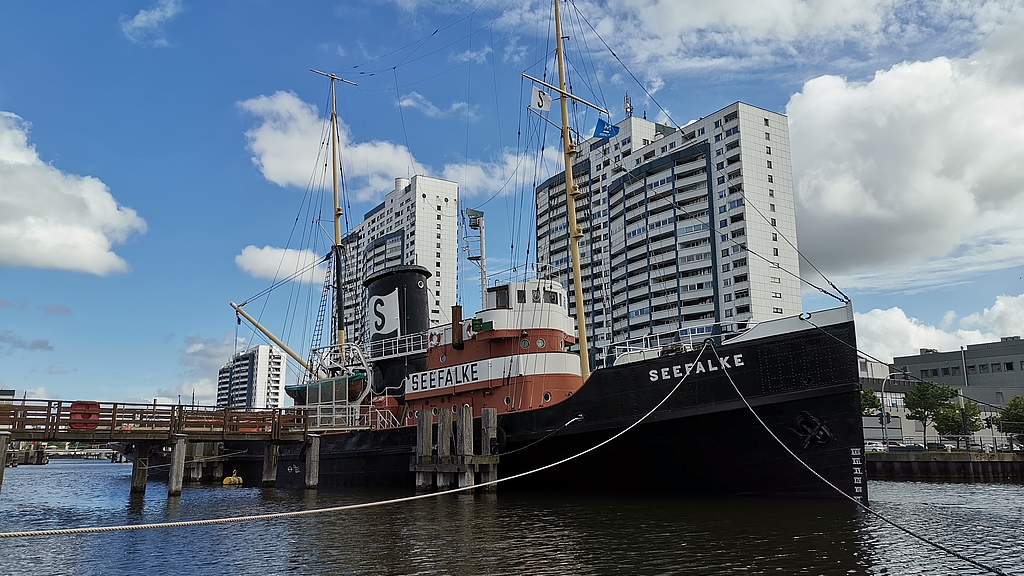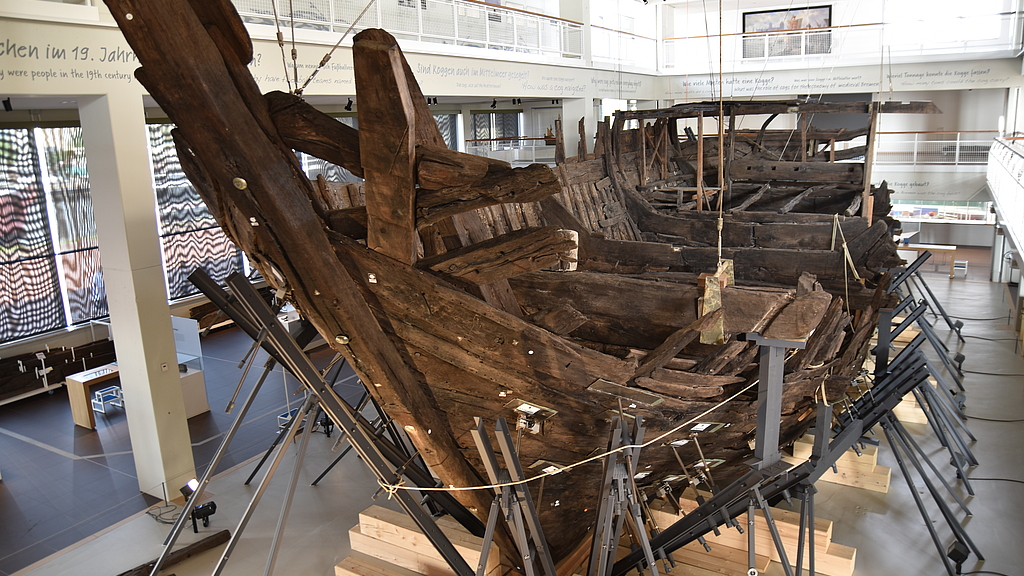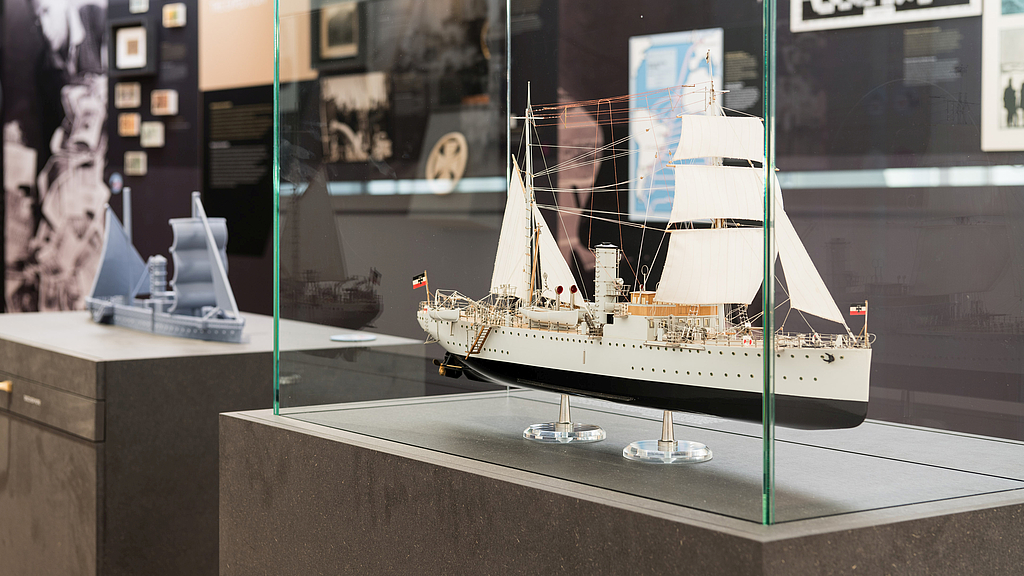Cog-Hall and Bangert Building can be visited. Plan your visit
Museum opening hours: daily 10 am - 6 pm, boats: daily 10 am - 5.45 pm +++ please note the special opening hours in June 2025 +++
Museum price: 10 euros, reduced 5 euros, free for all under 18s, guided tours included in the admission price
Ships in the museum harbor: free admission
NEW: Free admission for everyone up to 18.
News from the museum
-The world as a guest at the German Maritime Museum
Researchers from all over the world are currently visiting the DSM.
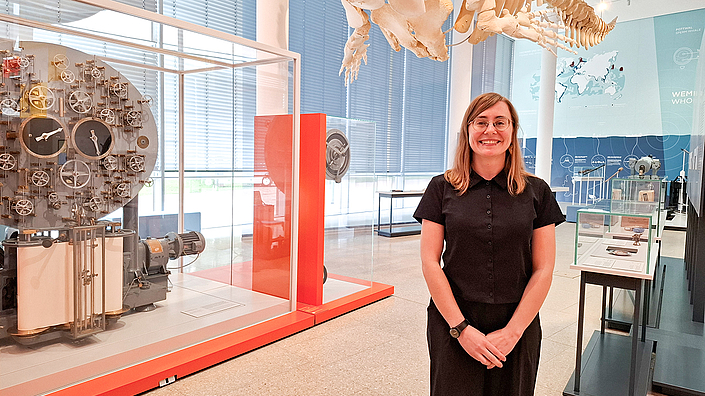
Stuck in Mobility
Five years after the start of the COVID-19 pandemic, the special exhibition sheds light on the experiences of seafarers and refugees during this time.
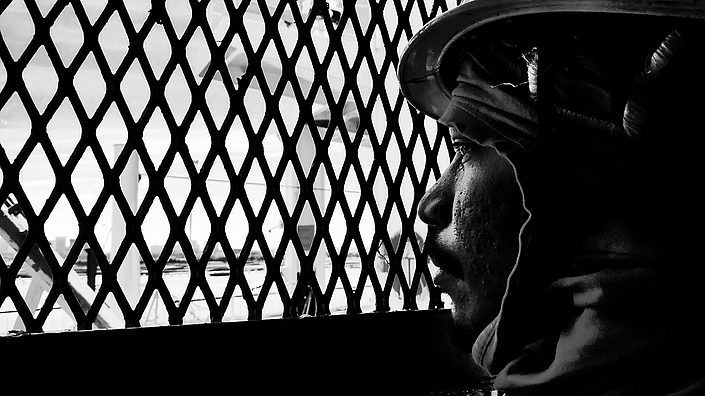
From the North Sea to the Pacific
Dr. Katrin Kleemann was awarded the prestigious Ritter Memorial Fellowship and spent a month conducting research at the Scripps Institution of Oceanography in San Diego.

Mayday! - When ships fail
The project “Disasters at sea and the maritime culture of remembrance in the 20th and 21st centuries” examines how shipping disasters influence people's view of the sea and what role the memory of these events plays in this.
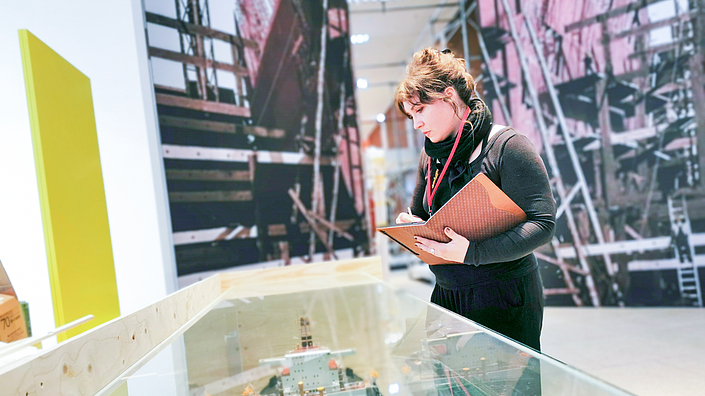
Dr. Frederic Theis in conversation
The award-winning historian, archaeologist and filmmaker Dr. Sam Willis came all the way from Great Britain to interview Dr. Frederic Theis. Topic: The Bremen cog.
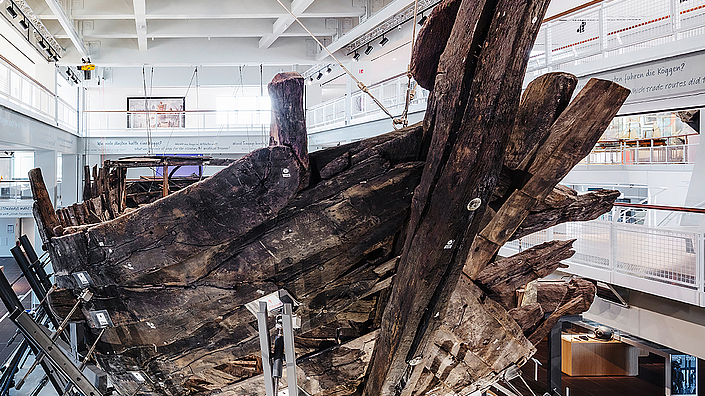
With OSIRIS to the joint collection
OSIRIS is a consortium and collaboration project involving (currently) 17 host and additional partner institutions, working together to establish the first global foundation for an integrated, interdisciplinary infrastructure for collections, information, and research.

Free admission for everyone up to 18 in the anniversary year
New: In the anniversary year, children and young people can now enjoy free admission to the museum.

Our research
-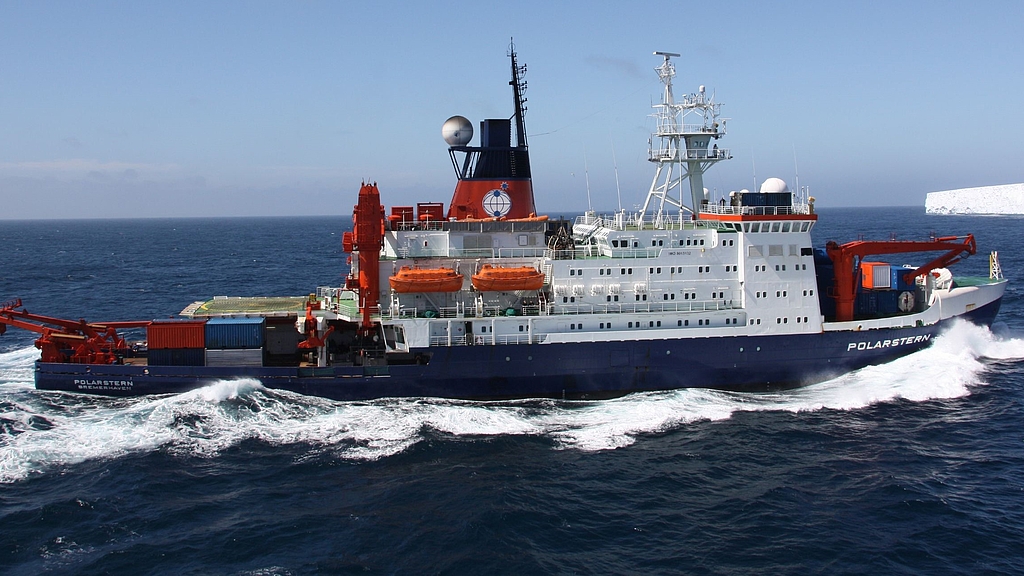
The German Maritime Museum is one of eight Leibniz research museums in Germany. Our researchers explain and research shipping and make the relationship between man and the sea understandable
All research projects at a glance
DSM-Star von 1380
-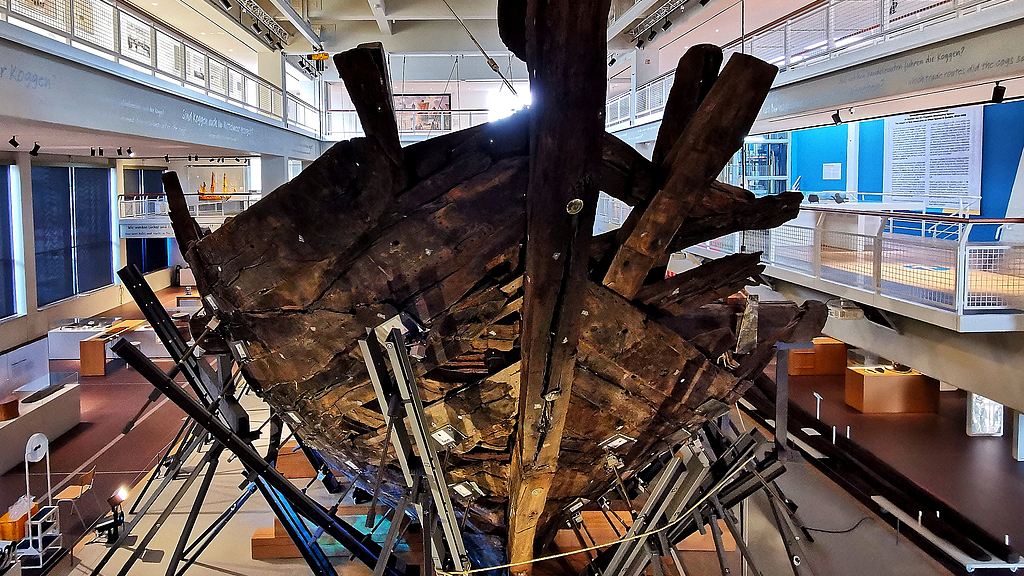
The cog is the centrepiece of the museum. Behind the wreck, which is more than 600 years old, lies a research thriller: discovered by chance in 1962 in the mud of the Weser, the complex salvage took three years. Afterwards, a team of restorers assembled the 2000 individual parts. To prevent the brittle oak wood from shrinking, the wreck floated in a tank filled with preservative for 18 years; in 1999 the liquid was drained and the construction removed. The cog remains an exciting object of research for scientists from all over the world and is considered the best-preserved trading ship of the Middle Ages

